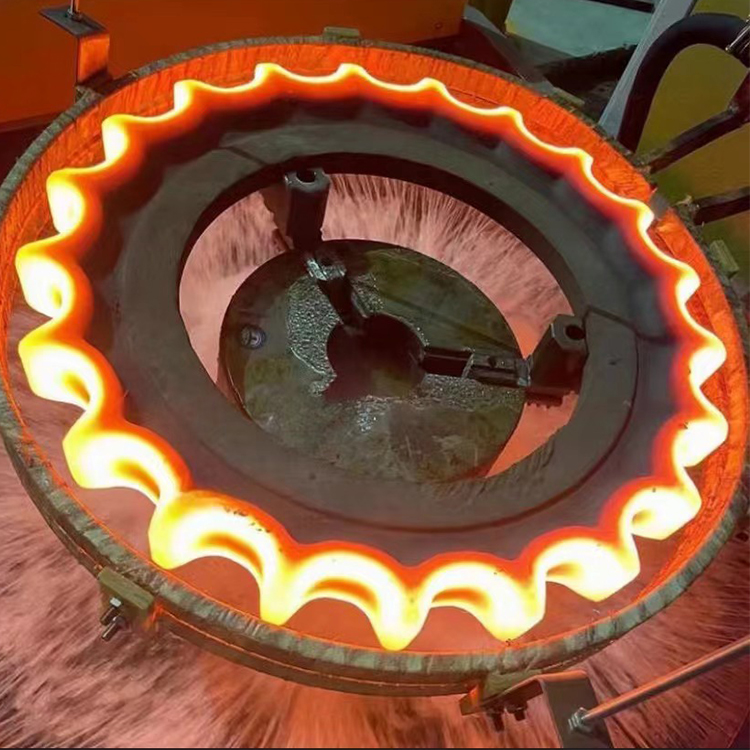What is surface hardening machine?
Surface hardening machine is a kind of rapid and selective metal surface method. Place a copper coil carrying a large amount of alternating current near the (non-touching) part. Eddy current and hysteresis losses generate heat at the metal surface. Induction hardening, usually water-based, adds polymers, etc., directly to the metal part or immersion. Turns the structure into martensite, much harder than the previous structure.
Now a popular modern induction hardening machine is called a induction hardening scanner. The parts are held between the centers, rotated, and then passed through a progressive coil that provides heat and quenching. Induction hardening takes place directly inside the coil so that the part requested heating area is cooled immediately upon heating. Power levels, residence times, scanning (feeding) rates, and other process variables are precisely controlled by computers.
What are surface hardening machine advantages?
The induction surface hardening machine is one of the best surface quenching methods, so it is widely applied in different metal parts heat treatment jobs. Compared with traditional heat treatment, it has the following advantages.
Induction heating belongs to internal heat source direct heating, heat loss is small, so the heating speed is fast, high thermal efficiency.
In the heating process, due to the short heating time, the part’s surface oxidation decarburization is less, compared with other heat treatments, parts reject rate is very low.
The parts after induction heating and quenching, the surface hardness of the parts are high, and the core part keeps good plasticity and toughness, showing low notch sensitivity, so the impact toughness, fatigue strength and wear resistance have been greatly improved.
Induction heating equipment compact structure, small footprint, easy to operate.
The clean production process, no high temperature, and good working conditions.
Can be selective induction heating.
Induction heating surface hardening mechanical parts brittleness is small but also can improve the mechanical properties of parts (such as yield point, tensile strength, fatigue strength), the same induction heating steel parts surface hardening is higher than the ordinary heating furnace hardening hardness.
Induction heating equipment can be placed on the processing line, through the electrical parameters for precise process control.
With induction heating hardening, ordinary carbon structural steel can be used instead of alloy structural steel and carburized carbon steel to make parts without reducing the parts quality. Therefore, it can replace chemical heat treatment with the complicated processes under some conditions.
Induction heating is not only used for parts surface induction quenching, but also for workpiece internal hole induction quenching, which can not be achieved by traditional induction heat treatment.
Customers can choose suitable surface hardening machines according to the quenching process, for special parts hardening process, can design and manufacture special CNC induction quenching machine tools according to heating process requirements.
How to choose the surface hardening machine frequency?
The induction surface hardening machine power and frequency choice are very important. The higher the frequency range, the less hardening depth. The lower the frequency range, the more hardening depth should be.
High frequency induction heating:100-500KHZ, normally use 200-300KHZ, it is tube type high frequency induction heating machine, hardening depth is 0.5-2.5mm, suitable for middle and smaller workpiece hardening jobs.
Medium frequency induction heating: current frequency range is 0.5-10KHZ, normally use 2.5-8KHZ, induction machine is IGBT modules or SCR modules. The hardening depth is 3-10mm. It is suitable for bigger diameter shafts and gears induction heat treatment process.
Power frequency induction heating: The frequency is 50Hz, use a power frequency induction heating machine, and the hardening depth is 10-20mm. It is suitable for a bigger diameter workpiece surface hardening technical process.



